NA2110
GenElute™ Bacterial Genomic DNA Kits
sufficient for 70 purifications
Synonym(s):
Bacterial Genomic DNA, bacterial DNA prep, bacterial DNA purification kit, bacterial gDNA extraction kit, bacterial gDNA isolation kit, bacterial gDNA purification kit, bacterial genomic DNA extraction kit, bacterial genomic DNA isolation kit, bacterial genomic DNA purification kit, Gen Elute
About This Item
Recommended Products
usage
sufficient for 70 purifications
technique(s)
DNA purification: suitable
storage temp.
15-25°C
Looking for similar products? Visit Product Comparison Guide
Related Categories
General description
The kit combines the advantages of a silica-based system with a microspin format and eliminates the need for expensive resins, alcohol precipitation, and hazardous organic compounds such as phenol and chloroform.
Application
- restriction endonuclease digestions
- PCR
- Southern blots
- cloning
Features and Benefits
- Starting material: Up to 1.5 mL of culture
- Expected yield: Up to 20 μg
- Elution volume: 400 μl
- Time required: 70 - 120 min
- A260/A280 ratio: 1.6 - 1.9
- No phenol, chloroform, or ethanol precipitation required
Principle
The expected yield of genomic DNA will vary depending on the cell density of the bacterial culture and the bacterial species and strain used. DNA purified with the GenElute kit has an A260/A280 ratio between 1.6 and 1.9 and can be up to 50 kb in length.
Other Notes
Legal Information
recommended
related product
Signal Word
Danger
Hazard Statements
Precautionary Statements
Hazard Classifications
Acute Tox. 4 Oral - Aquatic Acute 1 - Aquatic Chronic 2 - Eye Dam. 1 - Flam. Liq. 3 - Met. Corr. 1 - Resp. Sens. 1 - Skin Irrit. 2 - STOT SE 3
Target Organs
Central nervous system, Respiratory system
Storage Class Code
3 - Flammable liquids
Flash Point(F)
77.0 °F - closed cup
Flash Point(C)
25 °C - closed cup
Certificates of Analysis (COA)
Search for Certificates of Analysis (COA) by entering the products Lot/Batch Number. Lot and Batch Numbers can be found on a product’s label following the words ‘Lot’ or ‘Batch’.
Already Own This Product?
Find documentation for the products that you have recently purchased in the Document Library.
Customers Also Viewed
Articles
Simple DNA/RNA purification methods aid genome analysis from various sources, enhancing research efficiency.
Protocols
GenElute™ Bacterial Genomic DNA Kit protocol describes a simple and convenient way for the isolation of pure genomic DNA from bacteria.
Related Content
Overview of common techniques and downstream applications for extraction and purification of genomic DNA, plasmid DNA, and total RNA from cells, tissue, blood, viruses, and other sample types.
Our team of scientists has experience in all areas of research including Life Science, Material Science, Chemical Synthesis, Chromatography, Analytical and many others.
Contact Technical Service













